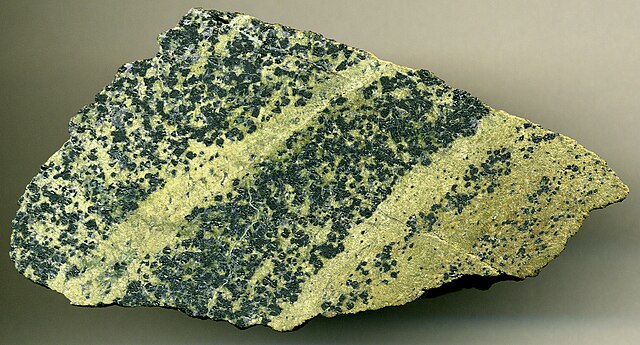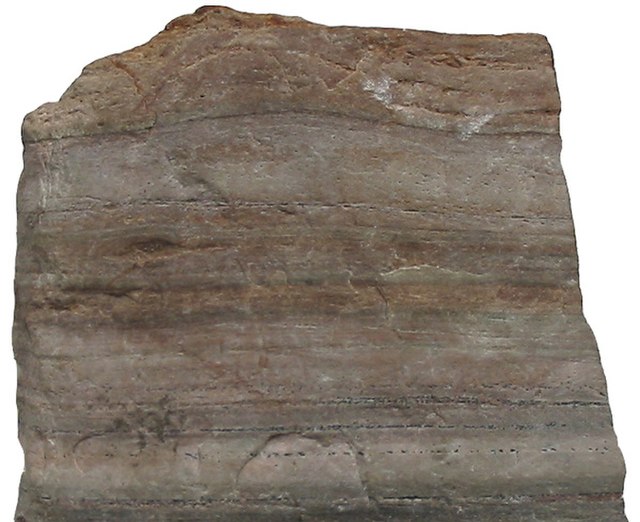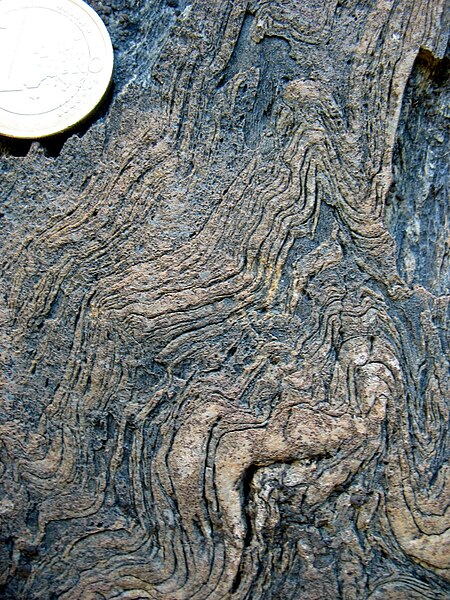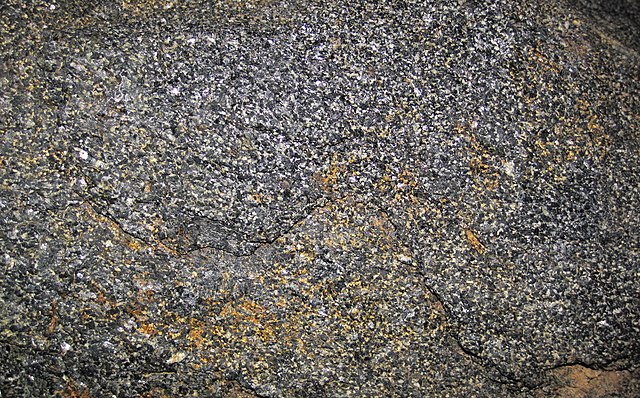Serpentinite is a metamorphic rock composed predominantly of one or more serpentine group minerals formed by near to complete serpentinization of mafic to ultramafic rocks. Its name originated from the similarity of the texture of the rock to that of the skin of a snake. Serpentinite has been called serpentine or serpentine rock, particularly in older geological texts and in wider cultural settings.
Serpentinite from the Maurienne valley, Savoie, French Alps
Sample of serpentinite from the Golden Gate National Recreation Area, California, United States
Chromitic serpentinite (7.9 cm (3.1 in) across), Styria Province, Austria. Protolith was a Proterozoic-Early Paleozoic upper mantle dunite peridotite that has been multiply metamorphosed during the Devonian, Permian, and Mesozoic.
Tightly folded serpentinite from the Tux Alps, Austria. Closeup view about 30 cm × 20 cm (11.8 in × 7.9 in).
Metamorphic rocks arise from the transformation of existing rock to new types of rock in a process called metamorphism. The original rock (protolith) is subjected to temperatures greater than 150 to 200 °C and, often, elevated pressure of 100 megapascals (1,000 bar) or more, causing profound physical or chemical changes. During this process, the rock remains mostly in the solid state, but gradually recrystallizes to a new texture or mineral composition. The protolith may be an igneous, sedimentary, or existing metamorphic rock.
Quartzite, a type of metamorphic rock
Metamorphic rock, deformed during the Variscan orogeny, at Vall de Cardós, Lérida, Spain
Amphibolite formed by metamorphism of basalt
Metamorphic rock containing staurolite and almandine garnet








